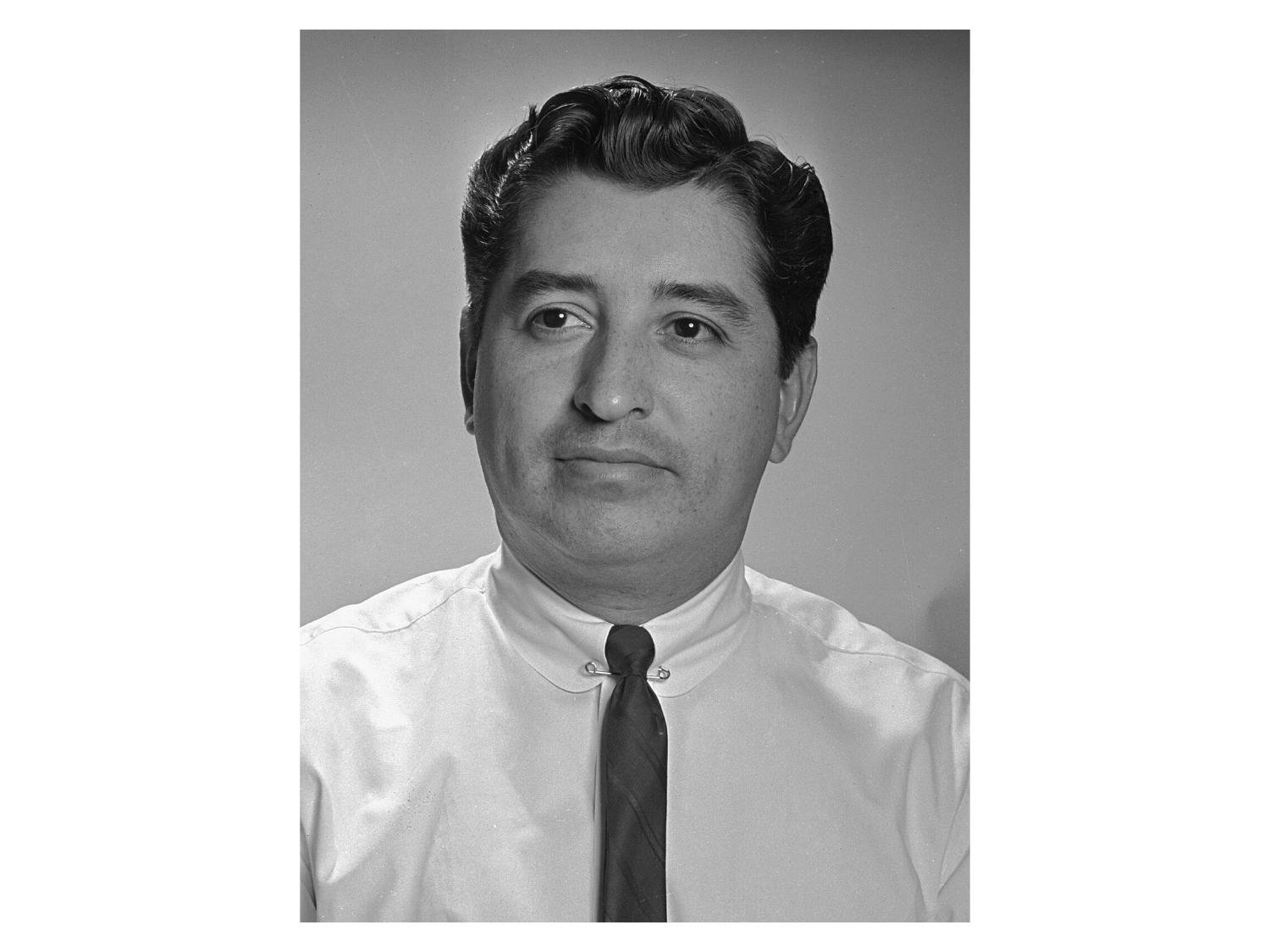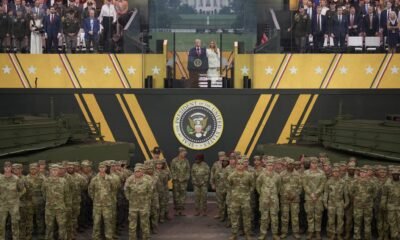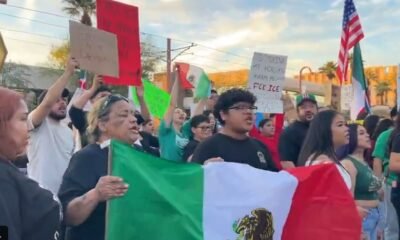crime
Echoes of the Past: Ruben Salazar’s Legacy Inspires Today’s Journalists Amid LA Protests

The issue of journalists facing violence during protests has resurfaced sharply, reminiscent of the tragic death of journalist Ruben Salazar over 50 years ago. Recent protests in the Los Angeles area against ICE immigration arrests have led to nearly a dozen journalists being injured by law enforcement’s “less-lethal” projectiles.
Among the injured is Sergio Olmos, an investigative reporter for CalMatters. He and several others sustained minor injuries during the protests. However, British journalist Nick Stern experienced a more severe injury when he was struck in the leg by a projectile, requiring emergency surgery to remove a 40mm round, leaving a significant wound.
Stern recounted the pain, likening the experience to being hit by live ammunition, expressing disbelief over the severity of his injury from what was intended to be a less-lethal round. Another reporter, Lauren Tomasi from News9 Australia, suffered a similar fate when a rubber bullet impacted her while she was live on air during a protest in downtown Los Angeles.
In response to the incidents involving journalists, the Los Angeles Sheriff’s Department stated it is reviewing footage of Stern’s injury to determine departmental involvement. They emphasized their commitment to safeguarding media personnel during protests.
The LAPD has confirmed it fired over 600 rounds of less-lethal munitions during the recent protests and has initiated an investigation into Tomasi’s situation. Nonetheless, a recent LAPD release did not address the injuries of journalists nor mention the specifics regarding Tomasi’s case.
The history of journalists facing danger while reporting on civil unrest in Los Angeles is well-documented. Adam Rose, chair of the press rights committee of the Los Angeles Press Club, has been compiling incident data since the 2020 George Floyd protests, aiming to identify patterns of violence against the media. He asserts that a concerning trend of aggressive police tactics towards journalists exists.
Past incidents, such as the 2007 “Mayday Melee,” where multiple journalists were injured at a protest, highlight ongoing issues between law enforcement and media. Rose advocates for greater professionalism and respect between police and journalists, crucial for public knowledge and accountability.
California recently amended its Penal Code to require officers to minimize potential harm to bystanders, including journalists, when using kinetic projectiles. However, Olmos noted troubling practices, witnessing officers aiming at journalists from close range.
Rose drew parallels between current events and Salazar’s fatal encounter with a tear gas projectile in 1970, emphasizing the recklessness that still seems to permeate law enforcement tactics against the press. Despite the passage of time, Salazar’s tragic death continues to serve as a haunting reminder of the risks journalists face.
Retired journalist Frank Sotomayor, recalling the incident, reflected on the profound loss felt within the journalistic community after Salazar’s death. He expressed the lingering questions around the circumstances of that fateful day, highlighting ongoing concerns about journalists’ safety.
In 2022, a record number of journalists were killed while on duty, underscoring the risks faced globally in the line of reporting. Similar to the experiences in Los Angeles, many of these fatalities occurred in conflict zones, illustrating the persistent dangers inherent in the pursuit of truth.


















